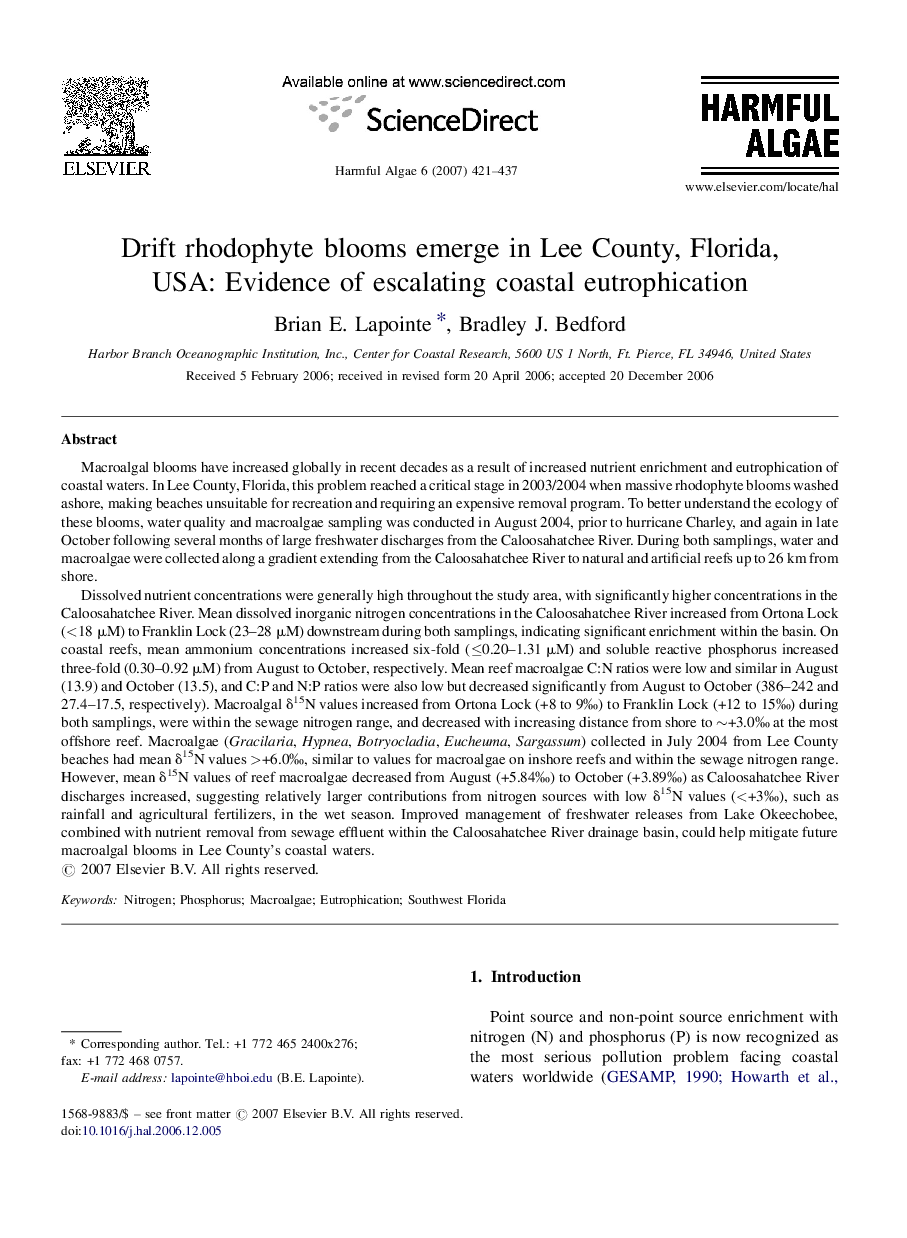| کد مقاله | کد نشریه | سال انتشار | مقاله انگلیسی | نسخه تمام متن |
|---|---|---|---|---|
| 4546079 | 1327486 | 2007 | 17 صفحه PDF | دانلود رایگان |

Macroalgal blooms have increased globally in recent decades as a result of increased nutrient enrichment and eutrophication of coastal waters. In Lee County, Florida, this problem reached a critical stage in 2003/2004 when massive rhodophyte blooms washed ashore, making beaches unsuitable for recreation and requiring an expensive removal program. To better understand the ecology of these blooms, water quality and macroalgae sampling was conducted in August 2004, prior to hurricane Charley, and again in late October following several months of large freshwater discharges from the Caloosahatchee River. During both samplings, water and macroalgae were collected along a gradient extending from the Caloosahatchee River to natural and artificial reefs up to 26 km from shore.Dissolved nutrient concentrations were generally high throughout the study area, with significantly higher concentrations in the Caloosahatchee River. Mean dissolved inorganic nitrogen concentrations in the Caloosahatchee River increased from Ortona Lock (<18 μM) to Franklin Lock (23–28 μM) downstream during both samplings, indicating significant enrichment within the basin. On coastal reefs, mean ammonium concentrations increased six-fold (≤0.20–1.31 μM) and soluble reactive phosphorus increased three-fold (0.30–0.92 μM) from August to October, respectively. Mean reef macroalgae C:N ratios were low and similar in August (13.9) and October (13.5), and C:P and N:P ratios were also low but decreased significantly from August to October (386–242 and 27.4–17.5, respectively). Macroalgal δ15N values increased from Ortona Lock (+8 to 9‰) to Franklin Lock (+12 to 15‰) during both samplings, were within the sewage nitrogen range, and decreased with increasing distance from shore to ∼+3.0‰ at the most offshore reef. Macroalgae (Gracilaria, Hypnea, Botryocladia, Eucheuma, Sargassum) collected in July 2004 from Lee County beaches had mean δ15N values >+6.0‰, similar to values for macroalgae on inshore reefs and within the sewage nitrogen range. However, mean δ15N values of reef macroalgae decreased from August (+5.84‰) to October (+3.89‰) as Caloosahatchee River discharges increased, suggesting relatively larger contributions from nitrogen sources with low δ15N values (<+3‰), such as rainfall and agricultural fertilizers, in the wet season. Improved management of freshwater releases from Lake Okeechobee, combined with nutrient removal from sewage effluent within the Caloosahatchee River drainage basin, could help mitigate future macroalgal blooms in Lee County's coastal waters.
Journal: Harmful Algae - Volume 6, Issue 3, April 2007, Pages 421–437